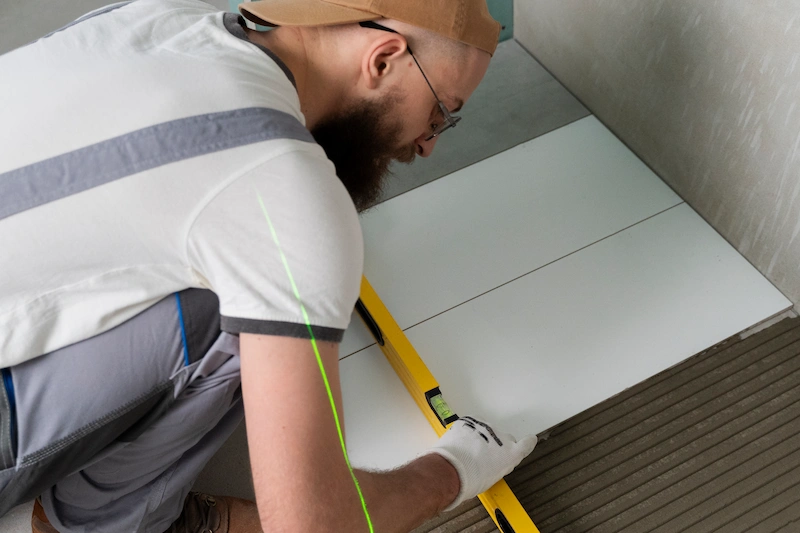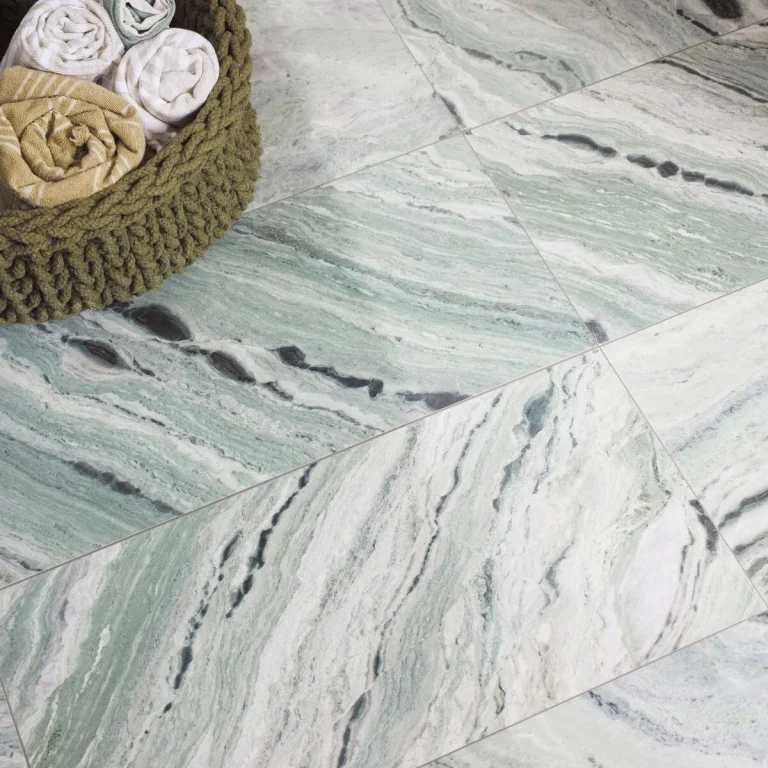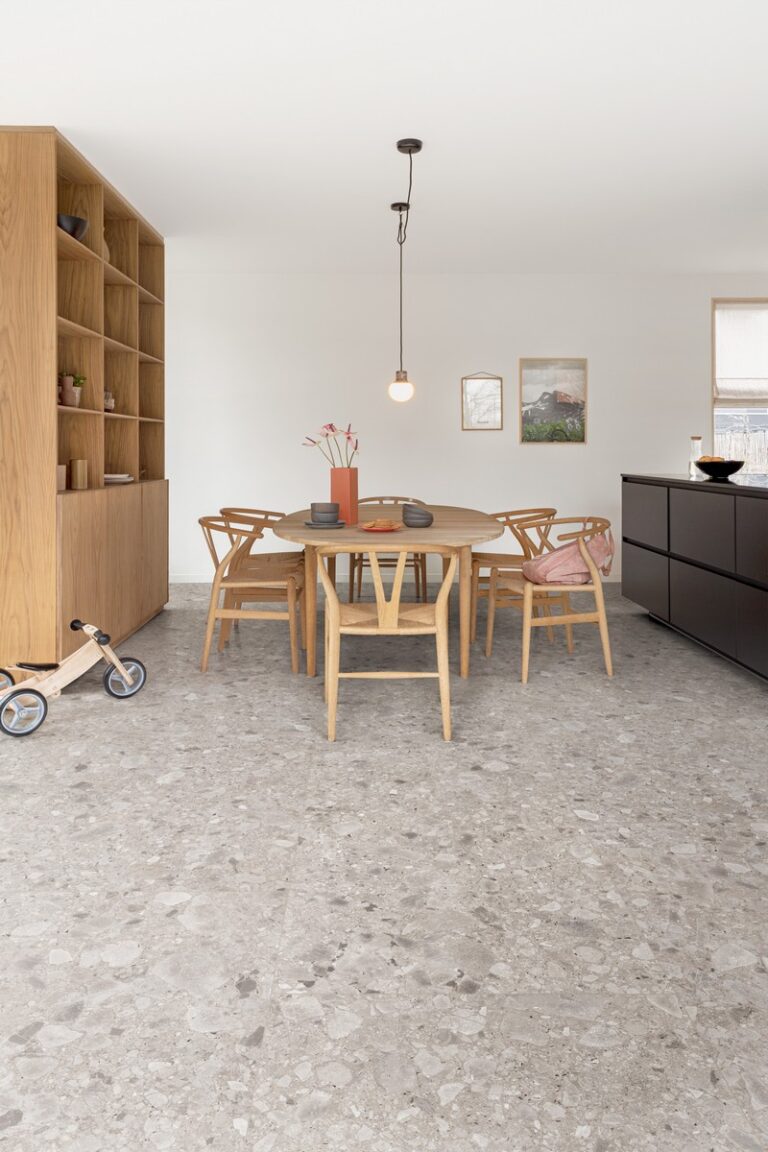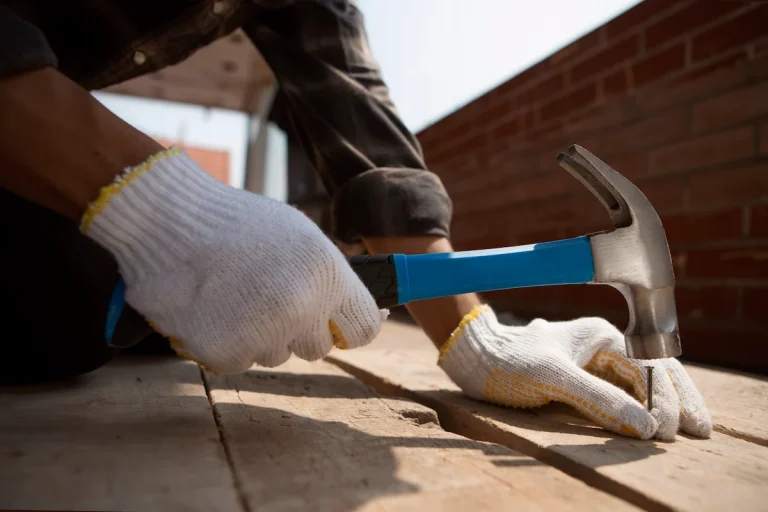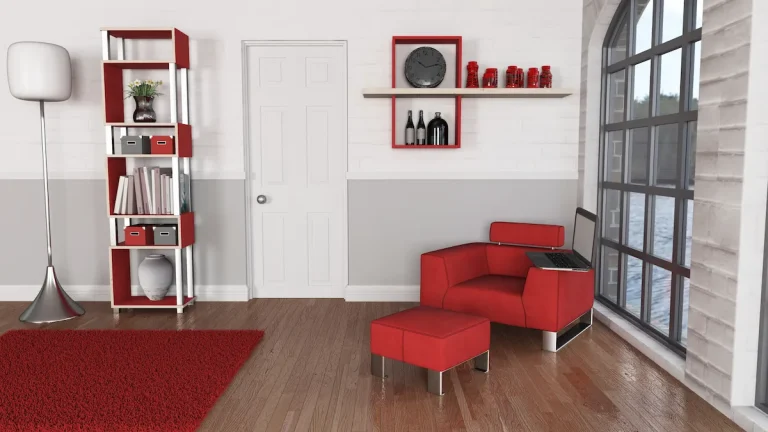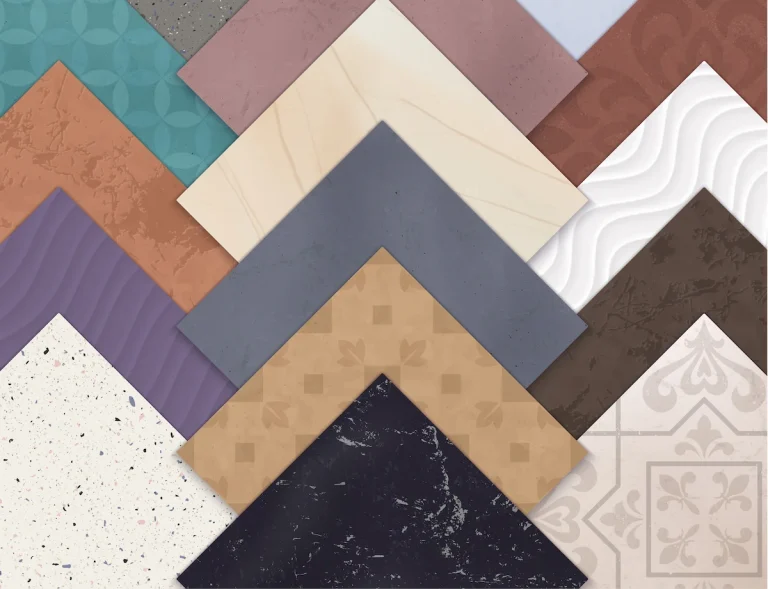Vinyl flooring has emerged as a preferred option for homeowners and designers alike, owing to its durability, versatility, and aesthetic appeal, with many aesthetic options available to suit diverse design preferences. In terms of installation, does vinyl flooring need to be glued down?
This article delves into the nature of vinyl flooring, examines the various types available, such as loose lay and click vinyl, and outlines the advantages and disadvantages of employing glue during installation. By the conclusion of this article, readers will possess the requisite knowledge to ascertain the most suitable installation method, considering factors like subfloor considerations and environmental factors, for their specific environments.
What Is Vinyl Flooring?
Vinyl flooring has emerged as a preferred option in both residential and commercial environments due to its versatility, low maintenance requirements, and cost-effectiveness, making it highly suitable for the residential marketplace and commercial warranty contexts. It is available in several forms, including:
- Glue Down Vinyl Flooring
- Luxury Vinyl Tile (LVT)
- Loose Lay Vinyl
- Click Vinyl Flooring
Each providing distinct advantages, installation methods, and thickness options. With its waterproof properties and extensive range of design aesthetics, vinyl flooring effectively addresses a variety of needs in the residential market as well as in commercial sectors, including healthcare and retail industries.
The Different Types Of Vinyl Flooring
There are various types of vinyl flooring available on the market, each characterised by distinct installation methods and properties.
- Glue Down Vinyl Flooring employs a robust adhesive suitable for high-traffic areas.
- Floating Vinyl Flooring presents a DIY-friendly alternative with a click-locking system that facilitates straightforward installation and replacement.
- Luxury Vinyl Tile (LVT), Loose Lay Vinyl, and Click Vinyl Flooring offer unique designs and thickness options, catering to diverse environments and aesthetic preferences.
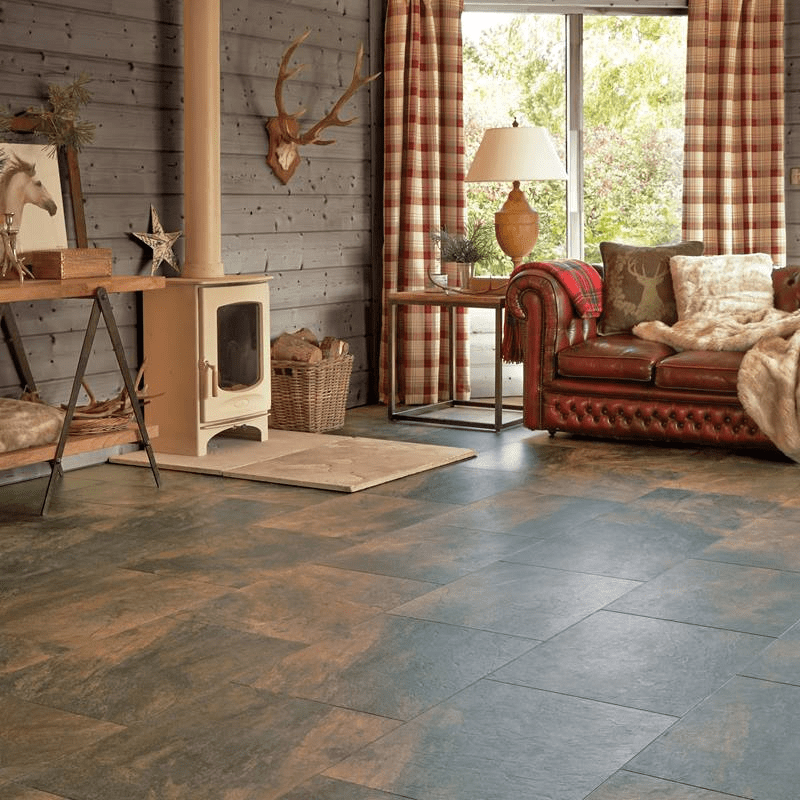
See product example for LVT: Karndean Art Select Slate Melbourne
Does Vinyl Flooring Need To Be Glued Down?
Determining whether vinyl flooring should be glued down is contingent upon several factors, including the type of vinyl flooring, the chosen installation method, and the characteristics of the subfloor.
Glue Down Vinyl Flooring necessitates the use of adhesive for proper installation, which can improve both floor stability and sound reduction, making it particularly suitable for areas with high foot traffic.
In contrast, Floating Vinyl Flooring allows for a more adaptable installation process without the requirement for adhesive. A comprehensive understanding of these factors enables homeowners and professionals to make informed decisions regarding the most appropriate flooring options for their specific requirements.
The Benefits Of Gluing Down Vinyl Flooring
Gluing down vinyl flooring presents numerous advantages, establishing it as a preferred option for both residential settings and commercial spaces. One significant benefit is the enhanced stability it offers, as it securely anchors the vinyl tiles in place, mitigating the risk of movement over time. This installation method also facilitates improved sound reduction and acoustical value, which is particularly advantageous in high-traffic areas. Additionally, glued down vinyl flooring generally exhibits superior durability and longevity, thus representing a sound investment for the future, as highlighted in maintenance manuals.
In various contexts, the durability of glued down vinyl flooring is essential, especially in locations that experience frequent foot traffic, such as commercial offices, retail establishments, and busy households. The secure installation method helps prevent damage from heavy furniture or high heels, thereby ensuring a visually appealing environment and enhancing comfort underfoot.
- Sound Reduction: The glued layers effectively absorb noise, fostering a quieter atmosphere that enhances comfort and productivity.
- Ease of Cleaning: Maintaining cleanliness is straightforward, as spills and dirt can be easily wiped away without compromising the integrity of the flooring.
- Stability: This method enhances the flooring’s resilience to temperature fluctuations, which is critical for spaces exposed to varying climatic conditions.
These collective benefits render glued down vinyl flooring a practical choice, whether one is redesigning a family room or equipping a commercial space.
The Drawbacks Of Gluing Down Vinyl Flooring
While gluing down vinyl flooring offers numerous advantages, it is important for potential buyers to be aware of certain drawbacks. One significant drawback is the installation costs, which require professional expertise and specific materials, such as hard set or pressure-sensitive adhesive, thereby increasing overall expenses. Once the flooring is glued down, replacing individual tiles can pose challenges, as it may entail significant labour and time compared to floating or loose lay options. Additionally, environmental factors, such as temperature fluctuations, can adversely affect adhesive performance.
The maintenance challenges associated with glued-down installations can contribute to long-term costs and inconveniences for homeowners. Regular cleaning routines may necessitate the use of specialised products, further increasing expenses. Notably, issues such as peeling or lifting may arise in high-moisture areas, necessitating prompt repairs to maintain both aesthetics and structural integrity.
- The need for continuous vigilance against moisture damage can pose a significant concern.
- The effectiveness of the adhesive over time may be influenced by humidity and temperature changes, which may not be as pronounced in floating options.
- This situation can result in costly repairs and extend the difficulties associated with replacing damaged sections.
Therefore, while glued down vinyl flooring can provide a seamless appearance, the considerations regarding current and future maintenance, along with the replacement ease, often highlight the advantages of alternative methods, such as plank systems that interlock easily.
How To Determine If Your Vinyl Flooring Needs To Be Glued Down?
Determining whether vinyl flooring requires adhesive installation necessitates a careful evaluation of several critical factors, including the manufacturer’s recommendations, the specific type of vinyl flooring, and the conditions of the subfloor.
Each flooring option, such as Glue Down Vinyl Flooring or Floating Vinyl Flooring, has distinct guidelines that clarify installation methods based on subfloor moisture levels and stability. By thoroughly assessing these elements, one can make an informed decision that harmonises aesthetic preferences with practical considerations.
1. Check The Manufacturer’s Instructions
The initial step in assessing whether your vinyl flooring requires adhesive application is to meticulously review the manufacturer’s instructions, which contain essential information regarding the recommended installation method. The Installation Manual typically specifies whether the flooring should be glued down using hard set or pressure-sensitive adhesive, thereby ensuring compliance with warranty requirements and optimal performance.
The guidelines may also detail specific environmental conditions necessary for installation, such as temperature and humidity levels, which can significantly impact the effectiveness of the adhesive and influence installation techniques. It is crucial to consider the following:
- Preparation instructions for subfloor surfaces to ensure they are clean, dry, and level.
- Recommended drying times for adhesives, which can help prevent complications after installation.
- Information regarding the types of vinyl flooring, whether luxury vinyl tiles (LVT) or sheets, as these may necessitate different adhesives.
Adhering to these guidelines not only protects your flooring investment but also enhances its longevity and aesthetic appeal, serving as an important investment consideration.
2. Consider the Type of Vinyl Flooring
Considering the type of vinyl flooring in question is essential in determining whether it should be adhered to the subfloor. For example, Glue Down Vinyl Flooring typically requires adhesive for a secure installation, whereas Floating Vinyl and Loose Lay alternatives offer installation methods that do not necessitate the use of glue. Click Vinyl, utilising a click-locking system, allows for a swift and straightforward installation that can be easily removed without causing damage.
Understanding these various installation methods can significantly impact the choice of flooring, particularly when evaluating long-term usability, maintenance, and product durability.
- Glue Down Vinyl Flooring: This installation method is particularly suitable for high-traffic areas due to its strong adhesion to the subfloor. However, it can be labour-intensive and may necessitate professional installation.
- Floating Vinyl: This option is ideal for do-it-yourself enthusiasts, as it is less invasive and can be installed over existing floors. Nevertheless, it may exhibit reduced durability in environments with high moisture levels.
- Loose Lay Vinyl: This type provides the advantages of quick installation and easy removal, making it advantageous for temporary setups; however, it may shift under the weight of heavy furniture.
Each option presents a distinct set of advantages and challenges, which influence not only the installation process but also the flooring’s performance over time, making it important to consider design choices and flooring characteristics depending on your longevity needs and cleaning maintenance.
3. Assess The Subfloor
Assessing the condition of the subfloor is a crucial step in determining the appropriate installation method for vinyl flooring, as it directly affects both stability and moisture management. A clean, dry, and level subfloor is essential for ensuring the longevity of the adhesive used in Glue Down Vinyl Flooring. Conversely, elevated moisture levels may require alternative installation techniques, such as Floating Vinyl or Loose Lay options.
It is particularly important to evaluate three key aspects:
- Moisture Levels: High moisture content can lead to warping and damage, thereby compromising the effectiveness of the adhesive, especially in commercial spaces like the healthcare industry and retail industry.
- Cleanliness: Insufficient cleaning of the subfloor may result in poor adhesion, leading to issues such as bubbling or peeling over time.
- Stability: A solid and stable subfloor provides the necessary support, minimising the risk of movement that could damage the vinyl flooring.
By addressing these factors, one can ensure a durable installation that significantly enhances both the performance and appearance of the flooring.
Ultimately, taking the time to assess the conditions of the subfloor will result in savings in both time and costs associated with future repairs or replacements.
The Steps To Gluing Down Vinyl Flooring
The installation of glued vinyl flooring requires meticulous attention to detail to ensure a successful outcome that enhances both stability and durability. For brand consideration, using Luxury Vinyl Tile (LVT) with feature strips can significantly boost the visual appeal in both residential settings and commercial spaces. The process commences with the proper preparation of the subfloor, which is critical for effective adhesion.
Following this, the adhesive must be spread evenly across the surface, after which the vinyl tiles can be laid out according to the desired pattern. Each step in this process must be executed with precision to avoid common pitfalls and to ensure long-lasting performance of the flooring.
1. Prepare The Subfloor
The initial step in securing vinyl flooring involves the meticulous preparation of the subfloor, which is crucial for ensuring optimal installation and floor stability.
This foundational phase establishes the basis for a successful project, as thorough subfloor preparation directly impacts the longevity and functionality of the flooring. The key tasks involved in this process include:
- Cleaning: Removing dust, debris, and any residual adhesive is essential to ensure that the bonding surface is immaculate.
- Levelling: It is imperative to address any dips or uneven areas by applying an appropriate self-levelling compound to create a smooth surface.
- Moisture Testing: Conducting moisture assessments is vital to identify any underlying dampness that could potentially lead to mould growth or adhesive failure.
By diligently addressing these steps, the likelihood of complications during installation is significantly reduced, ultimately enhancing the performance of the entire flooring system.
2. Spread The Adhesive
Once the subfloor has been adequately prepared, the subsequent step involves the careful application of adhesive, which may either be a hard-set adhesive or a pressure-sensitive adhesive, depending on the specific type of vinyl flooring being used. It is imperative to apply the adhesive evenly using the recommended trowel to ensure a robust bond between the vinyl and the subfloor.
When selecting an adhesive for the project, it is essential to understand the distinct characteristics of hard-set and pressure-sensitive adhesives:
- Hard-set adhesives typically require a curing period before the flooring can be walked on, creating a permanent bond.
- Pressure-sensitive adhesives provide the flexibility of being repositionable, allowing for adjustments during the installation process.
To achieve an even application, a notched trowel appropriate for the chosen adhesive should be used, applying consistent pressure to avoid lumps.
Furthermore, it is critical to ensure that the working environment is free from draughts and extreme temperatures, as these factors can significantly impact the effectiveness of the adhesive.
Common pitfalls to avoid include applying an excessive amount of adhesive, which may lead to messiness and extended drying times, as well as failing to allow adequate time for the adhesive to set before placing the vinyl on the floor.
3. Lay The Vinyl Flooring
After the adhesive has been evenly applied, the subsequent step involves laying the vinyl flooring, ensuring that each tile is positioned accurately to achieve the desired aesthetic design. It is essential to adhere to the manufacturer’s recommended installation techniques for precise alignment, thereby avoiding any gaps or misalignment.
Before commencing the installation, it is advisable to take a moment to plan the layout, considering factors such as the shape of the room and the source of natural light. This preparatory phase can significantly influence the overall appearance of the finished floor. The alignment of the tiles is particularly critical in larger areas; misaligned tiles can result in noticeable discrepancies that detract from the visual appeal.
To achieve optimal results, the following steps should be observed:
- Utilise a chalk line to establish straight guidelines on the subfloor.
- Ensure compliance with all spacer requirements to accommodate slight expansions due to temperature fluctuations.
- Carefully match patterns and textures between tiles, as inconsistencies can lead to an unprofessional appearance.
Additionally, it is beneficial to perform a dry fit of the tiles prior to securing them with adhesive. This practice allows for adjustments to be made without finalising the layout. Such attention to detail not only streamlines the installation process but also enhances the longevity and aesthetic value of the flooring.
4. Roll The Flooring
Once the vinyl flooring has been installed, it is imperative to utilise a heavy roller to ensure proper adhesion and stability of the floor.
This critical technique involves applying uniform pressure across the entire surface, which not only promotes a secure bond between the vinyl and the substrate but also reduces the likelihood of future lifting or curling. When the installation team effectively implements this method, it significantly enhances the longevity and durability of the flooring.
The following are some key benefits of this technique:
- Improved Stability: Rolling maintains a level and even surface, thereby decreasing the chances of wear in high-traffic areas.
- Elimination of Air Pockets: This step is essential to prevent trapped air bubbles, which can result in premature wear or damage.
- Enhanced Adhesive Performance: The use of a heavy roller increases the contact area, ensuring that adhesives function optimally over time, contributing to the overall durability of the flooring.
By prioritising this technique, one can achieve a successful installation that endures over time.
Can Vinyl Flooring Be Installed Without Glue?
Vinyl flooring can indeed be installed without the use of glue, presenting several alternative installation methods that accommodate various preferences and requirements. For example, floating vinyl flooring uses a click-locking system, enabling straightforward installation without the need for adhesives.
Additionally, Loose Lay options can be directly placed on the subfloor, requiring minimal preparation.
a. Peel-and-Stick Vinyl Flooring
Peel-and-stick vinyl flooring is a highly user-friendly option, featuring an adhesive backing that facilitates straightforward installation without the need for traditional glue. Users can simply peel off the protective layer and adhere the vinyl tile directly onto the prepared subfloor, making it an ideal choice for individuals seeking a quick refresh of their space.
Along with its ease of installation, peel-and-stick vinyl flooring is recognised for its exceptional cost-effectiveness, making it a budget-friendly alternative for both homeowners and tenants. This material is highly durable, contributing to long-term savings as it typically withstands the wear and tear associated with everyday use.
The extensive range of design options available allows individuals to express their personal style with ease. Options range from traditional wood appearances to contemporary patterns, accommodating a variety of aesthetic preferences.
Key features include:
- Suitability for high-traffic areas
- Water-resistant options for kitchens and bathrooms
- Availability in an array of colours and textures
This versatility enables peel-and-stick vinyl flooring to complement various decor styles, enhancing both residential settings and commercial spaces efficiently. Additionally, it offers design strips and aesthetic options to match diverse taste preferences.
b. Floating Vinyl Flooring
Floating vinyl flooring is a widely recognised installation method that does not require adhesives, employing a click-lock system that allows the planks to easily interlock. This approach not only streamlines the installation process but also facilitates straightforward removal and replacement, rendering it a versatile choice for evolving design aesthetics. Glue down vinyl flooring is an alternative for those looking for a more permanent solution.
Along with its ease of installation, floating vinyl flooring presents several advantages that contribute to its popularity among homeowners and designers. The simplicity of the installation process gives the power to even DIY enthusiasts to undertake the project independently, thereby reducing labour costs. The process is further simplified by following an installation manual.
Moreover, floating vinyl flooring is exceptionally adaptable, compatible with various subfloors, including concrete, plywood, and certain existing flooring types, which eliminates the need for extensive preparatory work.
- The click-lock design minimises the risk of moisture infiltration beneath the planks, providing an added layer of protection against deterioration.
- This system allows the flooring to move and expand without warping, making it an excellent option for environments subject to humidity fluctuations.
- The extensive array of styles and colours available enables personalised touches that accommodate diverse tastes and preferences.
These factors collectively underscore why floating vinyl flooring has emerged as a leading choice in contemporary flooring solutions.
c. Interlocking Vinyl Flooring
Interlocking vinyl flooring presents an innovative, adhesive-free solution that comprises planks specifically designed to fit securely together, ensuring a stable and reliable installation without the necessity for adhesives. This installation method not only facilitates ease of use but also allows for quick adjustments or replacements when required.
Moreover, interlocking vinyl flooring is distinguished by its exceptional durability and versatility, rendering it an ideal choice for a variety of environments, ranging from residential to commercial settings. The unique design is particularly advantageous for:
- Residential Spaces: Homeowners can appreciate the aesthetic appeal and resilience of vinyl products that are capable of withstanding daily wear and tear.
- Commercial Areas: Businesses benefit from its robust characteristics, as the flooring can endure heavy traffic while retaining its visual integrity. The addition of acoustic backing helps reduce noise in busy environments.
- Moisture-Intensive Environments: Its water-resistant properties render it suitable for locations such as kitchens and bathrooms, where moisture levels are a prevalent concern. Options like loose lay vinyl and hard set adhesive can further enhance performance.
This type of flooring is typically available in a range of styles and colours, including popular choices like Beckett Maple and Terrasse Oak, enabling users to craft personalised spaces that reflect their taste while maintaining a balance between functionality and aesthetics. Feature strips are also available for added decorative flair.
Choosing whether to glue down your vinyl flooring depends on your needs, budget, and the specific environment of your space. Glue-down vinyl flooring offers enhanced stability and durability, making it ideal for high-traffic areas or commercial settings. On the other hand, floating vinyl options provide ease of installation, making them a great choice for DIY projects and spaces where future flooring changes are anticipated.
No matter which option you choose, proper installation is key to ensuring your flooring looks great and lasts for years to come. If you’re unsure about the best choice for your home or business, trust the experts at TEKA Flooring.
At TEKA Flooring, we not only offer a wide range of premium vinyl flooring options but also provide professional fitting services to ensure your floors are installed perfectly. Contact TEKA Flooring today for expert advice and flawless flooring installation!
Read also:


























